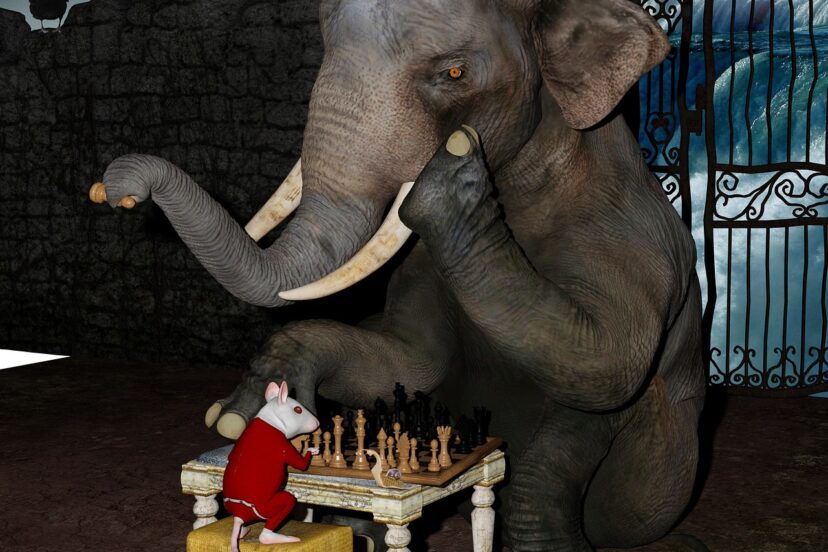Knowing where the money’s going can give you a big edge in sports betting. One key…
Variance in Betting: Friend or Foe?

When it comes to sports betting, few concepts are as misunderstood – or as crucial – as variance. Whether you’re a seasoned handicapper or just starting out, understanding and managing variance in sports betting strategies can make the difference between long-term success and emotional burnout. This article takes a deep dive into what variance is, how it affects your results, and how to build strategies around it – instead of falling victim to its inevitable swings.
What Is Variance in Sports Betting?
Variance refers to the natural ups and downs you’ll experience in betting – even if you’re making good bets. It’s the difference between expected outcomes and actual results over a series of bets.
Variance exists because sports are inherently unpredictable. Even the best bets – those with positive expected value (EV) – can lose. Over the short term, luck plays a large role. Over the long term, however, skill and strategy begin to show their power. Variance is what happens in the meantime.
Even with a system that wins 55% of the time, it’s still possible to hit a cold streak and lose 5, 6, or even 10 bets in a row. That doesn’t mean your system is broken; it means you’re in the middle of a variance swing.
How Variance Works in Practice
Let’s use a simple example.
Imagine you’re betting on NFL games with a system that hits 55% winners over the long haul. Each bet is $100 with -110 odds.
Your expected profit per bet is:
- $100 x 55% win rate x $90.91 payout = $50
- $100 x 45% loss rate x $100 = -$45
- Expected Value (EV) = $50 – $45 = $5 per bet
So theoretically, every bet is worth $5 in profit. But variance means that in any stretch of 10 or 50 bets, you might be ahead, behind, or dead even – even if your edge is real.
For instance:
- You might start hot: 8 wins, 2 losses (+$472)
- Or cold: 2 wins, 8 losses (-$636)
Same system. Same edge. Wildly different short-term results. This is variance at work, and recognizing it helps you avoid overreacting to winning or losing streaks.
Monitoring a Handicapping System for Variance
Tracking your results is essential to separate variance from a flawed system.
Here’s how to do it:
- Keep Detailed Records
Log every bet: date, teams, wager amount, odds, result, and reason for the pick. - Calculate Win Rate
Track your actual win percentage over time and compare it to your expected win rate. - Look at Sample Size
Don’t make conclusions after 10 bets. Analyze performance over 100+ bets to get a better sense of whether your edge is real or just noise. - Use Graphs and Visuals
Plot your cumulative profit/loss. This helps you visualize drawdowns (periods of losses) and recoveries. - Expected Value (EV) Tracking
Log whether each bet had a positive expected value based on your model. Over time, this gives a clearer picture of whether you’re sticking to your edge.
By monitoring your system properly, you’ll be able to say with confidence whether variance is to blame for a losing streak – or whether adjustments are needed.
Tips for Managing Variance in Sports Betting Strategies
Because variance is unavoidable, the goal is to manage it – not eliminate it.
Here are smart ways to manage variance in sports betting strategies:
- Flat Betting – Wager the same amount per bet. This smooths out your returns and limits the damage during cold streaks.
- Avoid Chasing Losses – Variance can tempt bettors into doubling down or making desperate plays. This almost always makes things worse.
- Use a Long-Term Perspective – Your goal isn’t to win today — it’s to win over time. Don’t let a bad weekend trick you into thinking your entire strategy is broken.
- Limit Your Volume – High-volume betting can amplify variance. Focus on quality over quantity, especially if your edge is thin.
- Bankroll Segmentation – Divide your bankroll into separate “units” and never bet more than a small percentage of your total roll on any single wager.
Managing Expectations: The Mental Side of Variance
Variance doesn’t just affect your bankroll – it messes with your head. That’s why managing expectations is just as important as managing money.
Here’s how to keep your mindset in check:
- Expect Losing Streaks: Even great bettors have long losing streaks. If you plan for them mentally, they won’t rattle you.
- Avoid Emotional Decisions: Don’t increase your bet size just because you’re on a roll. That’s variance – not genius.
- Define Success Clearly: Are you looking to make a living or just grow your bankroll slowly? Align your strategy with your goals.
- Take Breaks When Needed: Variance-induced frustration can lead to burnout. Step away when necessary to recalibrate.
Bankroll Management: Your Safety Net
Bankroll management is the number one defense against the negative effects of variance.
Follow These Guidelines:
- Never Bet More Than 2-3% of Your Bankroll
If you’re betting $100 per game, your bankroll should be at least $3,000–$5,000. - Define Your Unit Size
Your unit should be consistent. Don’t change it based on how confident you are in a pick. Let your strategy – not your emotions – dictate wagers. - Set Loss Limits
Stop for the day if you lose a set number of units. Variance will always balance out – but only if you don’t wipe out first. - Reassess Monthly
Recalculate your unit size based on current bankroll and performance.
Good bankroll discipline won’t stop variance from happening – but it will keep you in the game long enough to ride it out and win.
Conclusion: Don’t Fight Variance – Manage It
Variance isn’t your enemy. It’s a reality of betting – a force to be respected, not feared. Every professional bettor has battled variance and learned that survival depends on discipline, tracking, emotional control, and, above all, managing variance in sports betting strategies.
Losing streaks can shake your confidence, but if you’re tracking your bets, sticking to your edge, and practicing proper bankroll management, variance becomes just another part of the game. By accepting its role and preparing accordingly, you turn variance from a foe into a quiet, sometimes annoying – but ultimately harmless – friend.
Like this article? Pin it on Pinterest!





